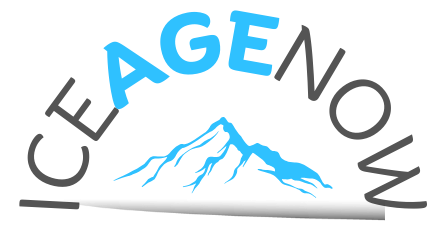As you stand witness to the changing climate patterns in the Southwest, the impacts of climate change reveal a complex web of challenges. From altered precipitation patterns to increased wildfire risks, the region faces a myriad of consequences. Stay tuned to unravel how these changes are reshaping communities, ecosystems, and economies, painting a vivid picture of the interconnectedness between our actions and the environment in this delicate balance.
Temperature and Snowpack Changes
Warming temperatures and reduced snowpack in the Southwest region have been observed in recent decades, indicating significant shifts in the climate dynamics of the area. These changes have implications for agriculture adaptation, wildfire risk, snow melting, species range, and population growth. With snow melting occurring earlier due to rising temperatures, agriculture in the region faces challenges in water availability for irrigation. The increased risk of wildfires is exacerbated by drier conditions resulting from reduced snowpack. Species range distributions are being altered as habitats shift in response to changing temperatures. Additionally, population growth adds pressure on resources already stressed by these climate shifts. To mitigate these impacts, strategies for agriculture adaptation, wildfire management, and conservation efforts to protect species affected by changing habitats will be crucial in the face of these climate dynamics.
Water Resources Impact
Considering the observed reduction in snowpack and projected impacts on water availability, the Southwest region faces significant challenges in managing its water resources due to climate change. Soil moisture depletion is a critical issue as warmer temperatures lead to increased evaporation, exacerbating soil aridity. Streamflow reduction is evident, with maximum streamflow occurring earlier and yearly streamflow decreasing. Evaporation acceleration further strains water availability, impacting agricultural irrigation and overall water resources. Population water competition intensifies with a projected 70% increase in population by mid-century, creating additional stress on already limited water supplies. Groundwater stress is a growing concern as recharge decreases due to changes in precipitation patterns. To mitigate these challenges, proactive measures such as water conservation strategies and sustainable water management practices are essential to ensure the resilience of the Southwest’s water resources in the face of ongoing climate change impacts.
Native American Communities
The vulnerability of Native American populations in the Southwest is expected to increase due to climate change impacts. Native communities, home to 182 federally recognized tribes, are already facing challenges that are being exacerbated by climate change. Drought impacts are currently affecting some communities, leading to losses of agricultural crops, livestock, and cultural plants. To address these challenges, adaptation strategies focused on cultural preservation, traditional knowledge, and community resilience are crucial. Incorporating traditional knowledge into adaptation plans can enhance the overall resilience of Native communities. Additionally, ensuring environmental justice for these populations is essential to mitigate the disproportionate impacts of climate change. By prioritizing cultural preservation, leveraging traditional knowledge, and promoting environmental justice, Native American communities in the Southwest can enhance their adaptive capacity and better navigate the challenges posed by climate change.
Human Health Consequences
Urban heat islands exacerbate vulnerability to heat-related illnesses in the Southwest region, particularly affecting elderly populations and low-income households. Increased heatwaves due to climate change intensify the health risks associated with extreme heat. Heat-related illnesses are a significant concern for public health, with heat stress being a leading cause of weather-related death. The impacts of urban heat islands on health are compounded by poor air quality and potential disruptions to essential services like electricity and water supply.
| Key Points | Actions |
|---|---|
| Heat related illnesses | Climate resilient infrastructure |
| Vulnerable populations | Healthcare |
| Urban heat islands | Community outreach |
| Health impacts | Heat stress prevention |
Efforts to mitigate these health impacts include the development of climate-resilient infrastructure, improvements in healthcare services, community outreach programs focused on heat stress prevention, and implementing strategies to address urban heat islands. Prioritizing the health of vulnerable populations through targeted interventions and policies is crucial in ensuring the well-being of communities in the Southwest region.
Forests and Ecosystem Vulnerability
Human health consequences, particularly in vulnerable populations, are exacerbated by urban heat islands in the Southwest region, necessitating a focus on forest and ecosystem vulnerability to address broader climate change impacts. Ecosystem resilience in the Southwest is under increasing pressure due to climate stressors such as drought, wildfires, invasive species, and pests. The region faces elevated wildfire risks, threatening the stability of various ecosystems. Changes in species range are expected as habitats shift in response to warming temperatures. The iconic piñon pine, a crucial species in the Southwest, is facing severe stress, leading to die-offs in some areas. Climate change is exacerbating existing pressures on ecosystems, testing their ability to adapt and recover. Understanding and addressing the vulnerabilities of forests and ecosystems are essential to safeguarding the diverse natural landscapes of the Southwest in the face of ongoing environmental challenges.
Water Availability Concerns
How does climate change impact water availability in the Southwest region? Projected drought, groundwater stress, and streamflow changes are key concerns. With increasing temperatures, runoff reduction, soil moisture decline, and evaporation increase are expected. The Southwest faces intensified water competition due to population growth, exacerbating water scarcity. Snowpack reduction further contributes to the intensification of water scarcity, affecting the region’s water resources.
As temperatures rise, snowpack reduction impacts the timing and volume of streamflow, affecting water availability for various uses. Groundwater stress is anticipated as warmer temperatures accelerate evaporation and reduce recharge rates. With runoff reduction and soil moisture decline, the Southwest faces challenges in sustaining water resources amidst population growth. Understanding these projected changes is crucial for effective water resource management in the face of climate change.
Plant Communities and Fire Risks
Projected changes in plant communities and fire risks in the Southwest region highlight significant ecological challenges exacerbated by climate change. The region’s plant diversity faces threats from altered fire regimes, impacting ecosystem functions and biodiversity conservation efforts. Fire management strategies must adapt to changing conditions to mitigate risks to plant communities and promote ecosystem resilience. Soil resilience, critical for supporting healthy plant growth, is at risk due to increased fire frequency and intensity. Biodiversity conservation efforts are crucial to safeguarding the unique plant species in the Southwest against the pressures of climate change. Ecosystem restoration projects play a vital role in enhancing the resilience of plant communities to withstand the impacts of changing fire patterns. Understanding the intricate relationships between plant communities, fire risks, and climate change is essential for effective conservation and management strategies in the Southwest region.


